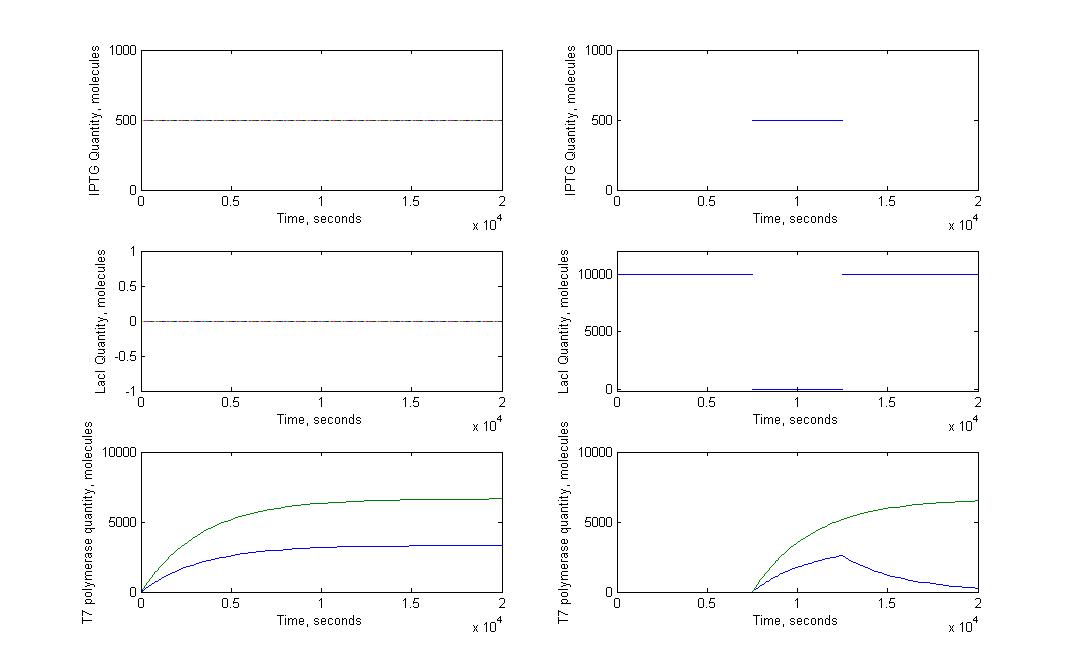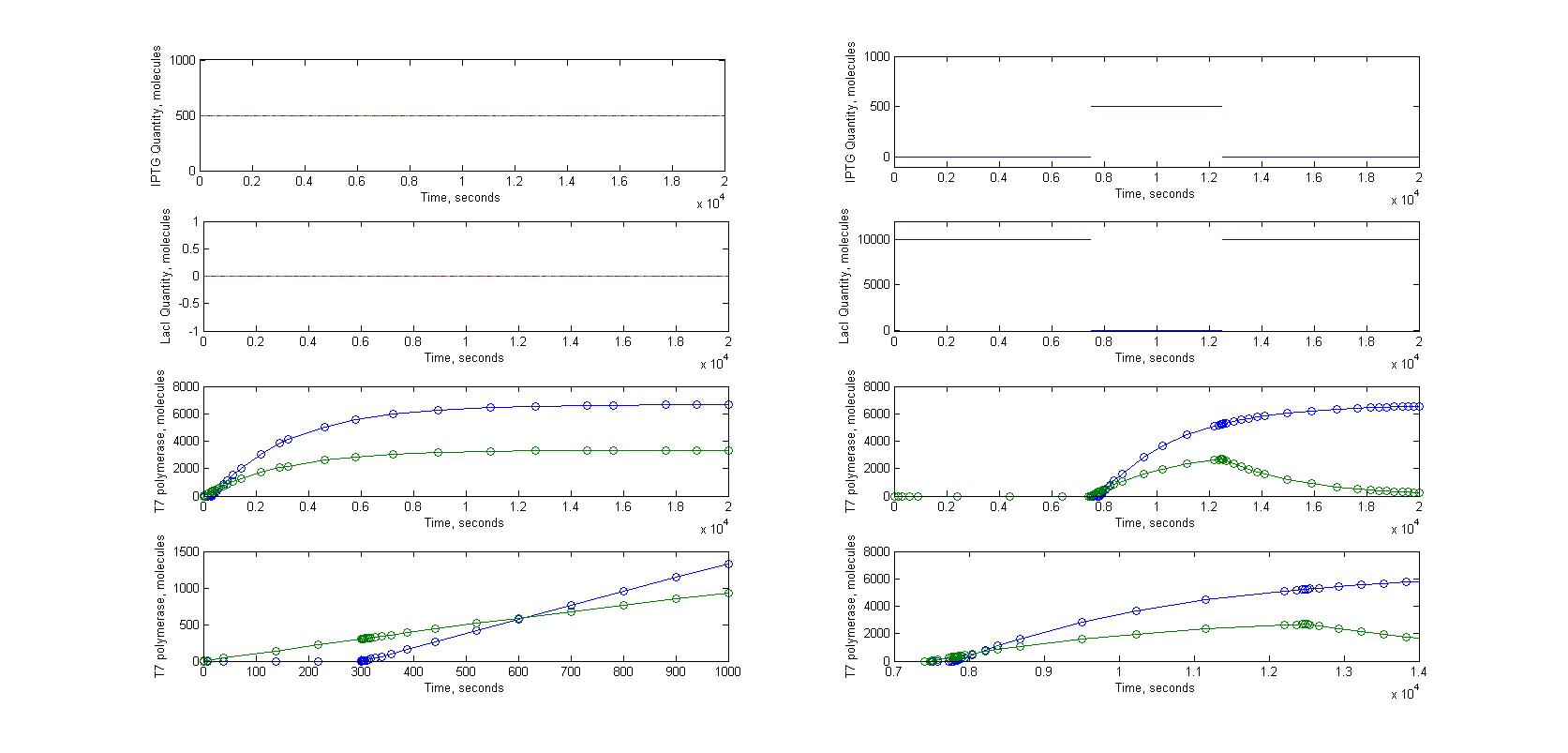Team:Paris Bettencourt/Modeling
From 2011.igem.org

Contents |
Modeling
Direct observation
Characterization
T7 system
tRNA amber system
The amber suppressor tRNA diffusion. The idea of the system is to pass tRNA amber molecules through the nanotubes. At every moment of time in the receiver cell there is a certain amount of transcripted mRNA-T7 among the others mRNA. The behavior of tRNA amber arrived to a receiver cell is random, so to describe its interaction with mRNA-T7 and its futher translation we can reason in terms of probability.
We can consider two types of events : a tRNA amber molecule gets close to a mRNA molecule and once it is close, it fits its anti-codon to some codon of the mRNA. The way of reasoning is chosen because there is an easy analogy to this problem : the problem of boxes and balls. There are two types of boxes, a of the first type and b of the second(that corresponds to the set of mRNA-T7 and mRNA-non-T7), and there are t balls(tRNA amber). All the balls are randomly distributed in the boxes. If there is two or more balls in some box of the first type(two or more tRNA amber per mRNA-T7) then a T7 molecule will be produced with a chance <math> $ \Delta = \Delta_1 + \Delta_2 $ </math>
This system can be modelled after making some important assumptions :
- All the molecules in the cell are uniformly distributed.
- The number of tRNA amber diffused through the nanotubes is much more smaller than the one of the mRNA.
Master/Slave
Bi-directional communication
 "
"




